Sake is the national liquor of Japan.
Sake is mainly made from rice, water, rice koji (a fungus that converts starch into sugar), and yeast (a fungus that breaks down sugar into alcohol).
Since there is no sugar in rice, the starch is converted into sugar by koji mold. By adding yeast, sugar ferments to alcohol.
The method of brewing sake and its management are so much complex and sophisticated.
“Toji” is the one who inherited this technique. The chief brewer at a sake brewery is called “toji”, and other workers are collectively called “kurabito”.
There are so many factors that affect the taste of sake such as type of rice, quality of water, heating method, rice polishing ratio, etc.
As a result, sake has a variety of flavors and aromas depending on the type of sake and it can be paired with a wide range of dishes.
Another big feature is that you can enjoy in a wide range of temperatures from 5°C to 55°C.
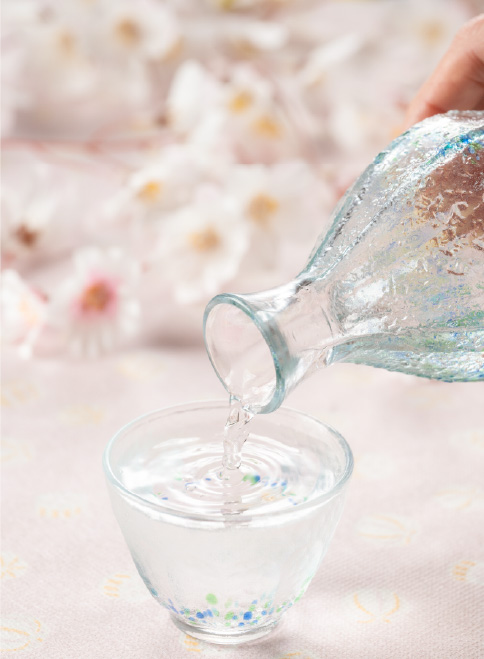
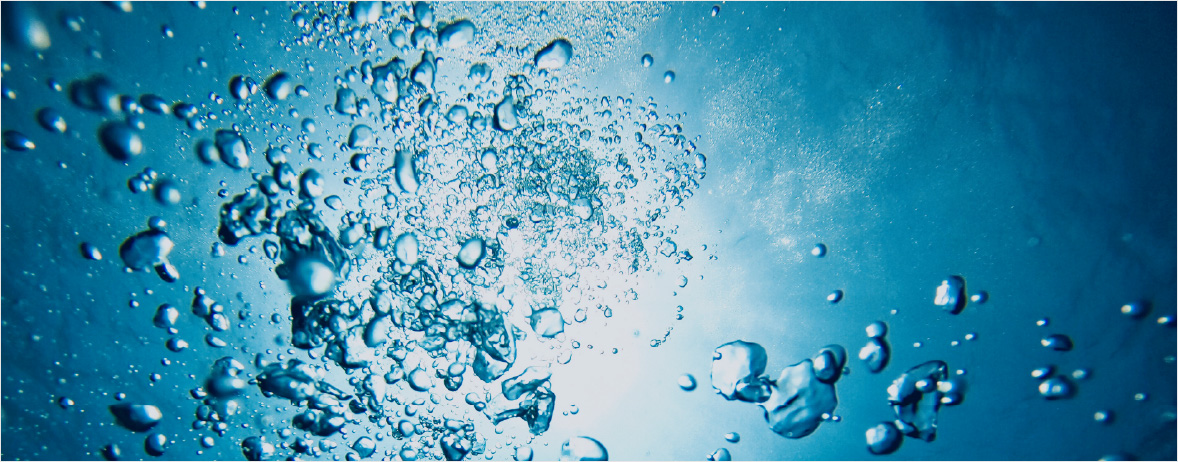
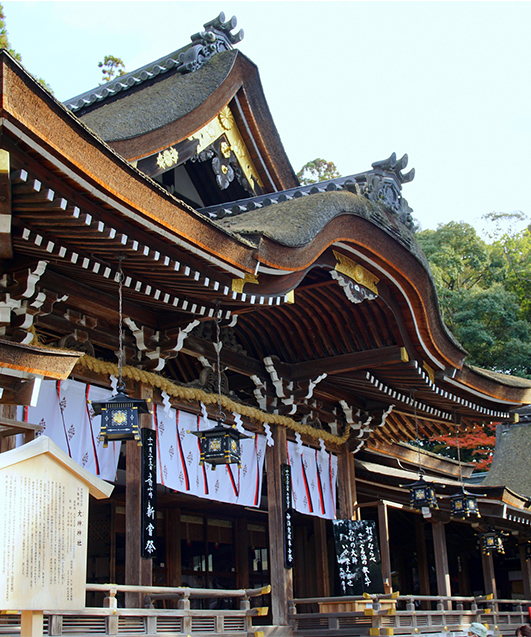
At festivals held at Shinto shrines in Japan, sake is offered as an offering and when ceremony is over, attendants of the ceremony have a toast with omiki (sacred sake).
Just as the story of sake often appears in mythology, sake has been a gift from the gods and getting drunk with sake is a blessing from the gods. Sake is an important thing that connects us with the gods of Japan.
For example, in the Nihonshoki (Chronicles of Japan) which is the Japan's oldest history book, there is a description of Ohmiwa-Junja Shrine in Nara region (also known as Miwa Shrine) which is said to be the birthplace of sake brewing.
---------------------------------------------------------------------------------------------
In the era of Emperor Sujin, Japan was in turmoil due to an epidemic. When Emperor Sujin agonized what to do, he had a dream from Omononushi-no-kami.
He said, “Make Ota-taneko, my descendant, the chief priest and offer sake.”Hearing this, the emperor called Takahashi-ikuhi-no-mikoto, a brew master, made him brewing sake in one night and offered sacred sake.
For this reason, Omononushi-no-kami was revered as the “god of sake brewing” and Takahashi-ikuhi-no-mikoto was enshrined as the “god of the toji (brew master)” at “Ikuhi-jinja Shrine”, subsidiary shrine of Omiwa-jinja Shrine.
---------------------------------------------------------------------------------------------
For the Japanese people, sake is not only to drink and have fun but it is also necessary to live with the gods of Japan.

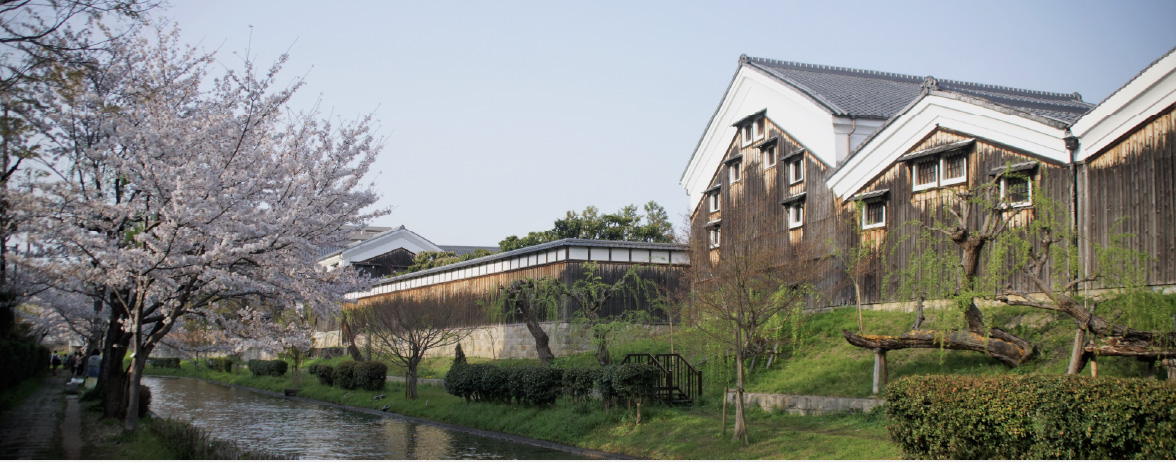
Here’s the explanation about main ingredients of sake: rice, water, and koji.
Rice
For sake brewing, we use a special type of rice called sakamai (sake-brewing rice) which has been improved breed in order to make delicious sake. Sake-rice has the following characteristics.
* Low in protein and lipids: cooked rice contains large amounts of protein and fat which contribute to improve flavor and luster of rice. However, protein and lipids also add unpleasant taste to sake. So, rice with less protein and lipids is preferred for sake brewing.
*Large shinpaku (white core): The opaque white part in the center of the rice grain is called “shinpaku.” Shinpaku has good water absorption and there are gaps where the hyphae of koji mold can easily enter. Thanks to large shinpaku, koji malt grows easily and fermentation proceeds in a well-balanced manner.
* Large tough grains: The taste of sake changes depending on the rice polishing ratio. The more rice is polished, the less protein and fat it contains. As a result, taste of sake will be clearer with less unpleasant taste. Therefore, sake-rice is required to have large grains and strength that is resistant to friction and heat so that it does not break easily.
Yamadanishiki, Gohyakumangoku, Miyamanishiki, and Omachi are the major sake-rice. Each has different character of taste.
Water
Sake consists of 80% water. So, in order to make delicious sake, good rice and good water are essential. The taste of rice also depends on water, so it is no exaggeration to say that water is the essence of the taste of sake.
Water is an important factor that determines the quality of sake. It contains the active ingredients (potassium, phosphorus, and magnesium) used in sake brewing. Conversely, if you use water that contains a lot of ingredients such as iron, which is a great enemy of sake brewing, the aroma and flavor of the rice will be lost.
Water contains various minerals, and hard water is rich in minerals. When hard water is used for brewing, sake tends to have a clear and sharp taste.Water contains various minerals, and hard water is rich in minerals. When hard water is used for brewing, sake tends to have a clear and sharp taste.
Our breweries are using delicious water such as underground water from Mt. Fuji or any other clear subsoil water.
Koji
Koji is a preparation obtained by growing a kind of mold on boiled rice.
It has been used as a starter for fermentation. Also, koji has a role of becoming source of umami of sake. For alcoholic fermentation, the starch in rice must be converted to sugar. That's the role of koji mold. After koji mold converts starch into sugar, “yeast” converts the sugar into alcohol to make sake.
Koji also plays an important role in creating the flavor of sake. Koji has a proteolytic enzyme that converts rice proteins into amino acids which are the source of the richness and umami of sake.
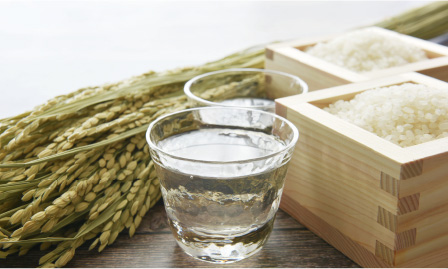
Sake is made using a unique process called multiple parallel fermentation. The figure below shows a comparison between single fermentation for making wine and multiple single fermentation for making beer.
1)Rice polishing
The sake brewing process begins with rice polishing. First, the outer layer of the sake rice grain is polished by a rice polishing machine.

2)Rice washing/soaking
After polishing, polished rice is washed in water to remove bran. Then, rice is soaked in water to absorb the water. This is so important that some “toji” (brew master) say, “the amount of time the rice soaks in water determines the flavor of sake.”

3)Rice steaming
Next rice is steamed. Good steamed rice should be soft in the inside and hard on the outside.

4)Koji making
koji making comes next. Koji is a preparation obtained by growing a kind of mold on boiled rice which convert starch in rice into sugar. The steamed rice is sprinkled with powdery koji mold to propagate the koji mold.

5)Shubo
Shubo means mother of sake in Japanese and is called fermentation starter. In order to cultivate a large amount of yeast, shubo is made by mixing steamed rice, koji, water and yeast.

6)Moromi making
Moromi means fermentation mash. In order to make moromi, steamed rice, koji and water are divided into three portions and added over four days. This method is effective to prevent microbial contamination. It takes about 3 weeks to 1 month for fermentation and moromi is ready.

7)Pressing
Once moromi process is done, moromi is pressed to obtain sake. Pressing is the process to separate sake and sake lees.

8)Storing and maturation
After pressing, sake is filtered, pasteurized and stored in tanks for several months to a year.
*In pasteurization process, sake is heated to about 60-70°C. The purpose is to kill bacteria and prevent further change in taste by enzymatic reaction. It makes sake stable without refrigeration.
*In pasteurization process, sake is heated to about 60-70°C. The purpose is to kill bacteria and prevent further change in taste by enzymatic reaction. It makes sake stable without refrigeration.

ContactPlease feel free to contact us